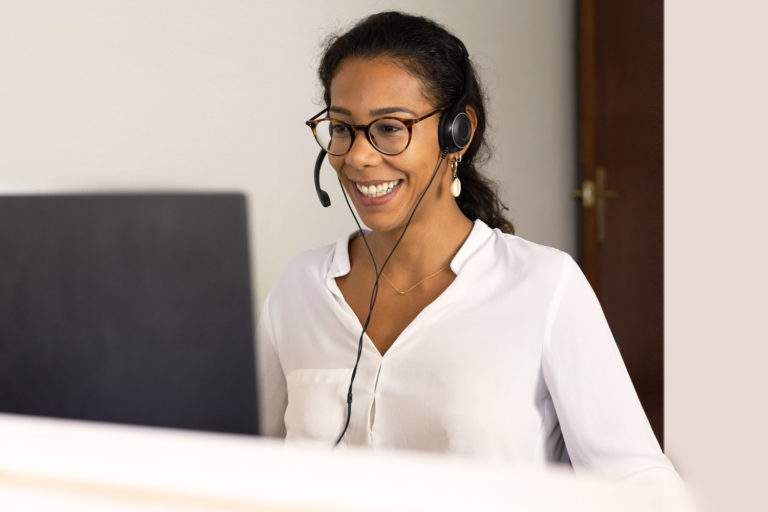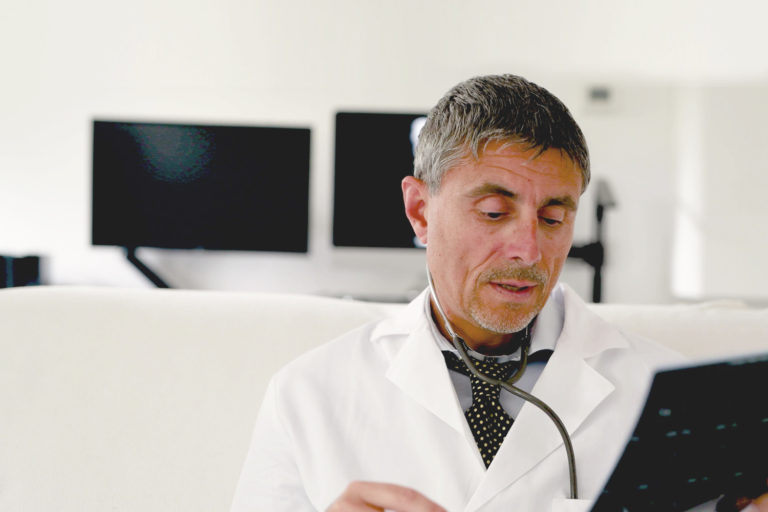Whether you’re the IT whiz or the hands-on patient care provider in your organization, remote patient monitoring devices (RPM) can make your job easier. RPM solutions will also empower your patient population to be more engaged and knowledgeable about their conditions and treatment.
It’s not surprising that 88% of healthcare providers have already invested in or are currently evaluating remote patient monitoring devices. Much like you and your care team nurture friend and family relationships via smartphones and other digital medical devices, you can also deepen ties with patients and improve health outcomes by exchanging health data via RPM technologies. This guide will show you how.
What are remote patient monitoring devices?
Imagine being able to observe, report, and analyze your patients’ acute or chronic conditions no matter where they are in the world. Remote patient monitoring devices make that possible for both clinicians and program directors in real-time.
Are you treating a patient with diabetes, high blood pressure, atrial fibrillation, or dementia? Monitoring a pregnancy or weight loss protocol? Remote patient monitoring devices enable your patients to share updates on their vitals and their environment from the convenience and comfort of home—or even at the office.
Whether it’s Fitbits, wearable heart monitors, Bluetooth-enabled scales, glucose monitors, skin patches, shoes, belts, or maternity care trackers, these non-invasive devices acquire, transmit, process, and store patient data—so your clinicians can retrieve it right when they need it.
Remote patient monitoring devices take the stress and scramble out of healthcare for a wide range of patients, and can help all kinds of specialists do their job more effectively and efficiently—and ultimately, more joyfully. This form of telehealth can also provide comfort and reassurance for the families of patients who are at a higher risk of falls or accidents using sensors that send alerts to both family members and medical providers.
It’s critical for your clinical and IT directors to research and discuss functions and reviews of the various RPM technologies on the market before choosing one that addresses the unique process gaps and technological challenges of your team.
How does remote health monitoring work?
Remote patient monitoring devices tap digital health technology to send communications between patients and providers. Patients monitor themselves to collect data about their health at various points throughout the day, then electronically transmit secure data in messages to their clinicians or technicians.
Then, medical professionals in their primary care offices, hospitals, intensive care units, nursing facilities, or off-site monitoring centers assess that information in order to make daily—or sometimes, even hourly—recommendations. By continuously tweaking each treatment protocol, they can also provide much-needed reassurance that treatment is working, immediate alerts to alter prescriptions, or direction to head to the ER if necessary.
After a patient is released from the ER or from a care facility, RPM devices allow providers to continue monitoring and treatment tweaks—often preventing the need to leave home again.
When clinicians can monitor weight, vital signs, blood pressure, blood sugar, blood oxygen, heart rate, and electrocardiograms from any point of care, they collect data more often and more consistently than they ever could at traditional in-office patient appointments. For patients with high-risk pregnancies, serious heart conditions, or dementia, this rapid, real-time information exchange could be an utter lifesaver.
Why is remote patient monitoring important?
Communication between patient and provider has proven to be critical in healing and recovery. Remote patient monitoring devices help develop trust and transparency. They provide a deeper understanding of conditions and treatments, empowering users to take more control of their care plans. Knowledge is power—and when both patient and provider have more of it, better patient outcomes become more common and less stressful.
The benefits of remote patient monitoring include lower readmission rates in ERs, hospitals, and care facilities. When patients don’t have to travel back and forth to facilities, they can preserve some of the time and energy needed for healing. Reducing stress is a prerequisite for any successful treatment protocol—biometrics can demonstrate that fact with each change in a patient’s condition.
Connected healthcare is critical for managing people with disabilities, chronic conditions, or aging populations with mobility impairments. It enables many people to live at home, resume control of their lives, and be fully engaged in their care. Remote patient monitoring devices can help reduce the number of times these individuals need to be hospitalized, or at least shorten their stays. It can make disease management and home care more efficient and effective.
When less severe cases don’t show up at these facilities, more bed space can be allocated for patients with severe conditions and emergency injuries. Being able to monitor patients without direct contact is more critical than ever during a pandemic when more beds are desperately needed. Communication and data sharing have no doubt improved the quality of care and the quality of life for patients—all while reducing costs for healthcare organizations of every kind. Artificial intelligence and monitoring technologies make great partners for all health systems.
Types of remote patient monitoring devices
You already know that the top ten diseases in the United States include heart disease, diabetes, and Alzheimer’s. But did you know that remote patient monitoring devices can help you track the progression of these conditions, helping your staff manage them more efficiently?
The following are some of the most valuable innovations that could save your patients more than just an extra trip to the ER:
Blood pressure monitor
This easy-to-use inflatable cuff fills with air, squeezing your arm then automatically calculating your patient’s heart rate and blood flow by measuring changes in artery motion as it deflates. Some blood pressure monitors take multiple readings to report daily averages. Home health monitoring can assist in early diagnosis of conditions like diabetes or kidney dysfunction which contribute to high blood pressure. It can also make healthcare delivery less stressful.
Continuous glucose monitor
Managing diabetes effectively requires continuous blood sugar monitoring. That single drop of blood your patient tests at home can also help to:
- Monitor medication effects.
- Track how diet and exercise affect blood sugar levels.
- Demonstrate how stress or illness affect blood sugar levels.
- Track progress toward treatment goals.
- Inform both patient and provider when it’s time for a follow-up appointment.
Anticoagulation testing device
Patients with atrial fibrillation, artificial heart valves, deep vein thrombosis (DVT), or pulmonary embolism are at risk for developing thromboembolism.
Anticoagulants like warfarin, however, have a narrow therapeutic window. They can also interact with some vitamin K-rich foods and other medications. Higher doses can cause bleeding. That’s why these patients require continuous blood testing. Care providers require more than the data collected when patients come into the lab every few weeks for a blood draw. Patients have to remember to visit the lab, find transportation, secure childcare, or take time off work to attend appointments during business hours.
Anticoagulation testing devices usually require just one drop of blood and about one minute to yield results. Patients then send the gathered information to their providers and await instructions on how to proceed with treatment.
Electrocardiography (ECG) devices
Whether in handheld, wearable, or patch form, these devices can help detect life-threatening conditions. ECG can catch symptoms of arrhythmia, myocardial ischemia, and ST depression— they may even alert clinicians to cardiac chamber abnormalities and drug toxicities.
These remote patient monitoring devices record electric impulses from a patient’s heart and transmit them to a clinician in real-time—even during endurance or sports training. Such accessible information can help your team tweak care plans on-the-fly, before a patient pushes themselves beyond their heart’s limit.
Heart rate monitors
These wearables tell you how many beats a patient’s heart takes per minute, so your team can tell them when they should be exercising more or less robustly—and taking medication more or less frequently.
Portable mobile devices automatically record and transmit a patient’s heartbeat data during errands, exercise, stressful events, and even sleep—which helps clinicians detect both symptomatic and asymptomatic arrhythmias, as well as atrial fibrillation after cardiac ablation. They’ve also helped clinicians diagnose and treat syncope and presyncope.
Medical alert systems
Every year, 1 out of 4 older adults in the U.S. experience a painful fall, according to the CDC. Approximately 20% of those result in broken bones, head traumas, or other disruptive injuries that double the chance of another fall in the future.
Immediate care after a fall is critical—that’s why remote patient monitoring devices are so valuable for independent seniors. These wearables can even help prevent death after a fall, as they enable immediate intervention by alerting the wearer’s clinician, emergency personnel, and their nearest caregiver or family member of what has happened.
Maternity care monitoring
Surveys consistently show that women with low-risk pregnancies prefer to minimize their number of OBGYN office visits when possible. Remote monitoring enables this patient population to achieve a higher level of control over pregnancy.
The number of required clinic visits goes down when pregnant women are able to have virtual visits with a nurse who instructs them on the use of an automatic blood pressure cuff, hand-held Doppler monitors, and weight monitors. Additionally, clinicians can provide access to online prenatal communities and encourage the use of pregnancy journals. These digital connections also enable emergencies to be reported and acted upon immediately.
Pediatric at-home monitoring
Hundreds of thousands of American children grow up with complex medical needs. In the past, these required frequent visits to multiple specialist practices and emergency care facilities, which disrupted childhoods in many ways.
Remote patient monitoring devices allow family priorities and goals to take center stage. Every time a child begins a new protocol or prescription, parents can track positive and negative effects—and report the information to their clinicians straightaway. They can also track behavioral data on exercise, pain, mood, and sleep patterns, which are especially important when managing behavioral challenges. Data is presented in colorful graphs and charts that enable families to view and discuss key patterns with their providers.
Pulse oximeter
These non-invasive clips are typically attached to fingers or earlobes in order to measure light wavelengths that determine blood oxygen levels. The light measures the proportion of hemoglobin in oxygen-saturated blood. Pulse oximeters also take a patient’s pulse.
These devices have been used for decades by people with chronic heart or lung issues, and by people who supplement oxygen to adjust their flow. That’s why they’re especially helpful in detecting declining lung function (which, these days, may prompt a COVID-19 test). Athletes also use them for fitness monitoring.
Smart scale
For patients managing congestive heart failure, gaining merely 2 or 3 pounds could be a sign of increased water retention. When clinicians receive this information on their remote patient monitoring device, they’re able to act quickly: prescribe a diuretic, increase a current medication dosage, or call the patient in for a visit.
Obesity—which the CDC reports affects nearly 40% of American adults—can lead to heart disease, stroke, type 2 diabetes, and certain forms of cancer. Regular weigh-ins are critical for this patient population, and smart scales make that task both easier and more efficient. Losing weight too quickly can be a symptom of multiple conditions, so reporting weight data to practitioners may help with critical diagnoses.
Medication monitoring
According to Consumer Reports, over half of the adults in the U.S. take prescription medications. One study found, however, that 60% of older Americans do not take their medications as prescribed.
Intelligent connected pill dispensers now come with patient management portals that connect patients and providers. This real-time communication can prompt patients to take their medication at the right time of day and in exactly the prescribed dosage to prevent adverse drug events (ADEs). Remote patient monitoring devices are especially helpful for psychologists, whose patients often require continual prescription monitoring and adjusting.
Patient wearables
Like most healthcare systems, yours is likely managing a growing number of patients with diabetes, stroke episodes, and other chronic diseases. Clinicians everywhere are simply overworked and overwhelmed with appointments. Patient wearables can cut down on the amount of time they have to spend seeing patients—allowing them to track and respond to patient medical data quickly, in real-time.
Again, patient wearables can track heart rate, blood pressure, glucose levels, weight gain and loss, and even stress to help clinicians deliver customized, data-driven care to patients sitting comfortably at home. Whether it’s biosensors inside shoes to track diabetes symptoms or in-ear ovulation predictors, data collection and analysis is much more efficient and much less stressful for all healthcare stakeholders.
Save time, energy, and resources with remote patient monitoring
The future of healthcare is here. It’s just a matter of time before remote patient monitoring devices are as common as cell phones and GPS apps. Only RPM directions can potentially enable your patients to arrive at conclusions and make pivots that save lives. To learn more about these ever-evolving technologies, read our comprehensive guide to RPM.


